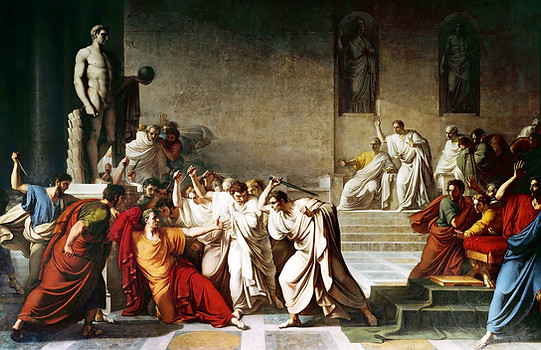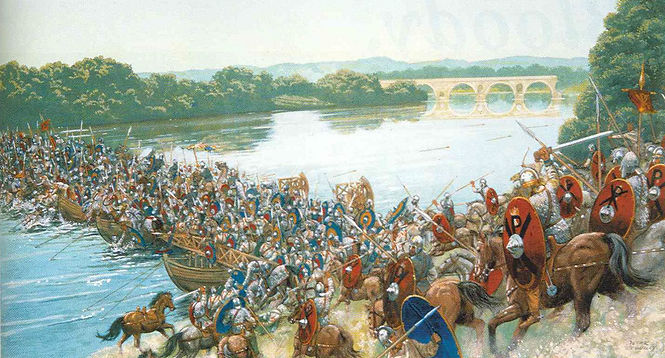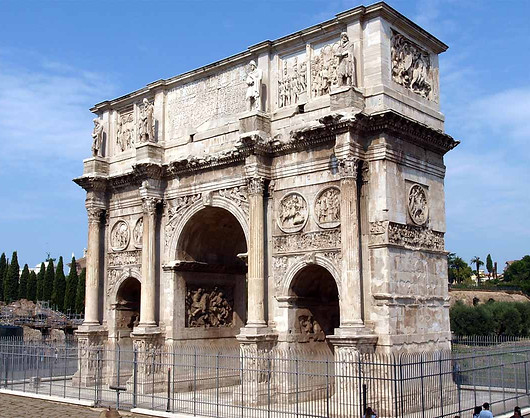
Highlighted today: Conflict and War or Peace and Security?
Great Truths and Relevant Prophecies for all
Nations and Peoples during this 21st Century

HOME | REVELATION 21ST CENTURY COMMENTARY | ADDITIONAL PROPHECIES | REBORN | SOCIAL CULTURAL ETHICAL | INTELLIGENCE KNOWLEDGE WISDOM | COMFORT and HEALING | MORTAL to IMMORTAL | WORLD RELIGIONS | BELIEF DISBELIEF | DEITY | VIDEOS | ABOUT | RECOMMENDED SITES | SPANISH SITE EDITORIAL LA PAZ | Documents for Limited Use Smartphones

February 21, 2025
Peace Publishers LLC. Resources in fifteen categories for self-instruction, classes, sermons, and conferences. An original 21st Century Commentary on Revelation is being added. Site administrator and publisher in English and Spanish: Homer Dewayne Shappley, evangelist and author of 2,500-plus documents in both languages. Oversight: Cairo, Tennesse Church of Christ.
EDITORIAL LA PAZ para miles de temas en ESPAÑOL
Translate documents on this site using Google’s Gemini or Microsoft Copilot..

Revelation: Its Ongoing
Relevancy and Fulfillment
Chapter Six
Ominous Drama
of Two Great Apocalyptic Beasts
Chapter 13 of Revelation
The First Beast
Act 1 | Scene 6
His "Fatal Wound" Was Healed

A wounded eagle, symbol of the
severely wounded Roman Empire.

The Sixth Head-King-Kingdom of the First Beast of Revelation 13 “seemed to have had a fatal wound, but the fatal wound had been healed.”
The Sixth Head was the Roman Empire. When and how did it receive such a terrible wound?
When and how was that almost “fatal wound” healed?
Dear Reader, you may ask: "Why should this be important to me?"
Among the reasons it is important to me is because the prophecies about the Mortal Wound and its Healing predated the events by 140 to 235 years. Fulfilled prophecies become facts I really need to face intelligently and objectively, as also their authors, for their integrity is proven by them. Do you have a few minutes to consider them in this case? They may lead to much greater discoveries, understanding, and invaluable perspectives!
Revelation 13:3-10

3 “One of the heads of the beast seemed to have had a fatal wound, but the fatal wound had been healed. The whole world was filled with wonder and followed the beast. 4 People worshiped the dragon because he had given authority to the beast, and they also worshiped the beast and asked, 'Who is like the beast? Who can wage war against it?' 5 The beast was given a mouth to utter proud words and blasphemies and to exercise its authority for forty-two months. 6 It opened its mouth to blaspheme God, and to slander his name and his dwelling place and those who live in heaven. 7 It was given power to wage war against God’s holy people and to conquer them. And it was given authority over every tribe, people, language, and nation. 8 All inhabitants of the earth will worship the beast—all whose
names have not been written in the Lamb’s book of life, the Lamb who was slain from the creation of the world. 9 Whoever has ears, let them hear. 10 ‘If anyone is to go into captivity, into captivity they will go. If anyone is to be killed with the sword, with the sword they will be killed.”
G. “One of the heads of the beast seemed to have had a fatal wound, but the fatal wound had been healed.” Revelation 13:3
The "Great Curtain of Times and Seasons" opens and Scene 6 of Act 1 of the “Ominous Drama of Two Great Apocalyptic Beasts" begins. "Ominous?" Yes. For "ominous tends to suggest a menacing or threatening aspect. It implies an alarming character that

foreshadows evil or disaster." https://www.merriam-webster.com/dictionary/ominous. And that is precisely what the
prophecies and visions of the Two Beasts of Revelation 13 convey. How could it be otherwise, for they are BEASTS and not sheep.
Right there in the middle of the scenario is that fearful beast that came up out of the sea
We are watching through the fantastic, colorful audio visions the apostle John received when one of the heads of that beast is “wounded by a sword” (Revelation 13:14) so severely that it could have proved “fatal.” To our surprise, the head is “healed!”
1. One of the seven heads suffers a “fatal wound.” Verse 12 says it was the “first beast” who received the “fatal wound” that was “healed.”
Head wounded fatally; beast wounded fatally. There is really no contradiction here for the first beast sustains the seven heads and, consequently, suffers any blow to any of the seven heads. Just as the whole human body is impacted when any one of its members suffers a wound or infirmity of some kind.
This fact confirms the thesis we have set forth according to which the “seven heads” are seven distinct manifestations on the Earth of the same primordial malevolent beast. This beast itself, singular, appears on the Earth in seven different timeframes by means of seven different secular-political kingdoms represented by his “seven heads.”
Let us take due note: In one of its seven manifestations it receives a “fatal wound.”
2. “…one of the heads…” signifies: One of the seven secular idolatrous empires already identified in Scenes 1 and 1. The phrase is equivalent to saying: “One of the seven kings,” for the “seven kings” of Revelation also symbolize seven secular-political earthly kingdoms. B-2 of Scene 2
3. “…seemed to have had a fatal wound…” It did actually receive such a wound for it is clearly stated that the “fatal wound had been healed.” It was so deep that it would have resulted in death under normal circumstances
4. “…but the fatal wound had been healed.” It penetrated to the very vital organs of the “first beast.” It struck the “head,” the center of power and control, of organization, planning, and movements. So severe was the wound that the great “beast” began to agonize and was about to succumb. However, astonishingly, it begins to recuperate! The “fatal wound” began to heal quickly.

5. Which of the seven great secular-political-idolatrous kingdoms of the world is represented by the head almost fatally wounded but that was healed? All evidence points to Imperial Rome.
a) When did the Roman Empire receive the “fatal wound?” Examining the abundant historical data on that Empire, in the third century of the Common Era certain events, circumstances, and leaders with their armies dealt the Roman Empire terrific blows that left it gravely wounded.

b) Who were the guilty parties? At the head of them were numerous rivals for the throne of Rome who fought bloody civil wars, competing mercilessly for the crown of the Empire. Their military campaigns weakened notably not only the institutions of government but also the capability of the Empire to defend itself against foreign enemies, resulting in the destruction of vast resources of all kinds, not the least of which would have been the number of soldiers wounded and killed.
The Crisis of the Third Century the Roman Empire Suffered
The Crisis of the Third Century, also known as the Military Anarchy or the Imperial Crisis (235 – 284 CE), during which the Roman Empire almost collapsed under the pressures of:
The invasions of barbarians, migrations within the Roman territory, civil wars, rebellions of the working classes, political instability, for example; the competition of usurpers for power. The dependence of Rome on foreign mercenary soldiers and their commanders, known as foederati, who nominally served Rome but were evermore independent. Also, plagues, devaluations of the currency, and economic depression.

During the third century and the early part of the fourth, barbarians from northern Europe, beyond the Danube River, assaulted the Roman Empire, or infiltrated it, taking over more and more territory. Franks, Goths, Germans, Saxons, Marcomanni, Herules, Lombards, Gepids, Visigoths, Vandals, etc. www.usa.edu
By the beginning of 268 CD, the Roman Empire had become divided in three sections competing with each other.
The Gallic Empire, made up of the provinces of Gaul, Britain, and, briefly, Spain.
The Palmyrene Empire, composed of the eastern provinces of Syria-Palestine, and Egypt.
Between these two, the Roman Empire itself, centered in Italy.

The Crisis came to a temporary end when Diocletian became emperor and implemented his reforms beginning in 284 CE. https://en.wikipedia.org/wiki/Crisis_of_the_Third_Century
c) Masses of slaves, beggars, and rift-raft, especially in the city of Rome, also collaborated in striking a “mortal wound” to the Roman Empire, for those restless and rebellious multitudes, besides being a marauding threat to the law-abiding and order itself, contributed nothing to the national treasury. On the contrary, they demanded and consumed a lot, exhausting precious resources vital to the solvency of the Empire.
Orgies in Rome. Many depraved
officials and citizens. Many slaves.

d) Depraved officials and citizens were also
accomplices of the act, morally and spiritually
sacking the Empire long before barbarians from faraway did it literally.
6. How and when was the “mortal wound” healed?
a) To begin with, we take notice of a very important accomplishment attained by the Roman emperor Constantine the Great. In 312 CE, he put an end to the Roman civil wars, defeating his rival Maxentius and taking over as the sole emperor in 324 CE

“Constantine I (Latin: Flavius Valerius Constantinus; Greek: Κωνσταντῖνος, translit. Kōnstantînos; 27 February c. 272 – 22 May 337), also known as Constantine the Great, was Roman emperor from 306 to 337. Born in Naissus, Dacia Mediterranea (now Nis, Serbia), he was the son of Flavius Constantius, a Roman army officer born in Dacia Repensis who had been one of the four emperors of the Tetrarchy. His mother, Helena, was a Greek
of low birth."
Bust of the Roman emperor Constantine the Great,
“Savior” of the Roman Empire.
Constantine, coming from Britain, arrives in the North of Italy with about 40,000 soldiers. He begins to fight against the forces of Maxentius in Italy, defeating them once and again as he moved down the Italian peninsula toward Rome. When Constantine and his army were not far from Rome, “Maxentius' forces were still twice the
size of Constantine's, and he organized them in long lines facing the battle plain with their backs to the river. Constantine's army arrived on the field bearing unfamiliar symbols on their standards and shields. According to Lactantius ‘Constantine was directed in a dream to cause the heavenly sign

to be delineated on the shields of his soldiers, and so to proceed to battle. He did as he had been commanded, and he marked on their shields the letter Χ, with a perpendicular line drawn through it and turned round thus at the top, being the cipher of Christ. Having this sign (☧), his troops stood to arms.’ Eusebius describes a vision that
Constantine had while marching at midday in which ‘he saw with his own eyes the trophy of a cross of light in the heavens, above the sun, and bearing the inscription, In Hoc Signo Vinces’ (‘In this sign thou shalt conquer’). In Eusebius's account, Constantine had a dream the following night in which Christ appeared with the same heavenly sign and told him to make an army standard in the form of the labarum.”
In the ensuing battle at the Milvian Bridge, Maxentius and his forces, though much more numerous than those of Contantine, were routed. “Constantine entered Rome on 29 October 312 AD and staged a grand adventus in the city which was met with jubilation.” https://en.wikipedia.org/wiki/Constantine_the_Great#War_against_Maxentius
After Constantine I defeated Maxentius in the decisive battle at the Milvian Bridge, an Arch of Triumph was erected in his honor proclaiming him to be the “Savior” of the Roman Empire. El debilita-miento y la caída del Imperio Romano, Tomo I, Página 295. Por Edward Gibbon
As a matter of fact, he did indeed save it from an imminent demise it probably would have suffered had the civil wars and other disasters continued unabated.

b) Given these facts, I personally do not hesitate to affirm unreservedly that the “mortal wound,” in the generic, metaphorical since, that the Roman Empire suffered at the hands of many enemies within and outside the state, was healed when the emperor Constantine established a new capital for the Empire in Byzantium, on the West side of the Bosporus, across from ancient Troas (Troada, Troy), consolidating the Roman military forces and inspiring the population with a new spirit of security and power.
c) “New Rome” founded. Rome saved and healed, rises again. In November 324 CE, Constantine the Great, accompanied by his advisors, engineers, and priests -yes, priests, not pagan but “Christian,” for the prophesied “apostasy” was speedily developing (2 Thessalonians 2:1-12)- stepped off the expansive perimeters of the new capital for the Roman Empire, calling it “New Rome.”
The name is highly significant. “New Rome!” That is, Rome reborn. Rome resurrected! The Roman Empire saved and healed!
Behold here fulfilled to the letter of the law exactly what was prophesied in Revelation 13:3!
Even before Constantine died some Romans were already calling the new capital “Constantinople” in honor of its founder. However, the original name given by the founder himself was “New Rome!”
The new capitol of the Roman Empire was inaugurated May 11, 330 CE.

This is a model of the central area of Constantinopla in the 7th century CE.
“In less that two centuries, Constantinople came to be the richest, most beautiful, and civilized city of the world, continuing so for ten centuries. By the year 337 CE, it had 50,000 inhabitants; by 400 CE, approximately 100,000; and by 500 CE, almost 1,000,000. For the space of a thousand years, here the Roman Empire survived a flood of barbarians that inundated Rome (in the West). For 800 years after Mohammed, it resisted the Muslim wave that inundated Asia, Africa, and Spain.”
Constantinople would “dominate the soul of the West for a thousand years.” Quotes and information are taken from "The History of Civilization," Volume IV, The Age of faith, Pages 3-5, by Will and Ariel Durant. The authors were awarded a Pulitzer Prize in literature for their great work.
This means that the Roman Empire did not end in the year 476 CE, contrary to the belief and teaching of a horde of writers, teachers, and preachers, especially in Europe and the Western Hemisphere. Extensive evidence fully confirming this conclusion is provided in the following document, an integral part of this commentary on Revelation.
Facts and Fictions regarding the Duration of the Roman Empire. History perverted and the errors propagated by commentators, professors, preachers, teachers, editors, and other writers, both online and in print. The highly deleterious impact of the false Narrative that says: “The Roman Empire Ended in 476 CE.”
d) Thus, the evidence for the healing of the “mortal wound” struck to the Roman Empire is really overwhelming. That “mortal wound” was “healed” during the first half of the fourth century of our Common Era when a new capital was established, called, precisely, “NEW ROME.” The founding of this new capital at a highly strategic place that connected Asia and Europe, its rapid growth, its incredible enrichment, and the consolidation in both East and West of the power of the Empire, would not all these tremendous events surely signify the healing of the many and deep wounds the Empire had received? What do you think, esteemed student of these subjects?
If you agree and understand that the prophecy about the “mortal wound” to the Roman Empire was fulfilled 235 years after it was revealed by God and Christ through the apostle John, will you also agree that this fact supports the truthfulness and reliability of the book of Revelation? Also, the integrity and reliability of its authors, God the Father and his Son, Jesus Christ? If you respond positively, would it not be wise to obey their gospel for you and all human beings? The good news that the strivings, wars, and darkness of this world will be replaced by “new heavens and a new earth” totally free of them. Click here for the steps to be taken as they are clearly and simply stated in the “gospel of salvation.”
Text and Document Composition by the author Homer Dewayne Shappley. All rights reserved. The only restrictions on the use of this document are the sale of it in any format and proper identification of its origin.
Category. Revelation: Its Ongoing Relevancy and Fulfillment. Commentary.
Facts and Fictions regarding the Duration of the Roman Empire. The highly deleterious impact of the false Narrative that says “The Roman Empire Ended in 476 CE” on the interpretation of prophecies in Revelation and Daniel.